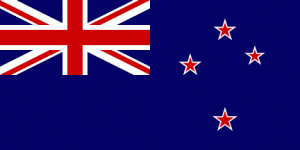
New Zealand
Quick reference
General issues: British colony 1855-1856, British colony/Self government 1856-1907, British dominion/Self government 1907-1947, British dominion/Sovereign state 1947-1987, Monarchy 1987-Present
Country name on general issues: New Zealand
Special issues: Occupation issues Samoa 1914-1920
Related issues:
- Cook Islands 1901-1919, Cook Islands 1932-Present
- Niue 1902-Present
- Penrhyn 1902-1932, Penrhyn 1973-Present
- Aitutaki 1903-1932, Aitutaki 1972-Present
- Rarotonga 1919-1932, Rarotonga 2011-Present
- Tokelau 1948-Present
- Ross Dependency 1957-Present
Currency: 1 Pound = 20 Shilling, 1 Shilling = 12 Pence 1855-1967, 1 Dollar = 100 Cents 1967-Present
Population: 802 000 in 1900, 4 438 000 in 2015
Political history New Zealand
Exploration and colonization
New Zealand is an island nation located in the south Pacific. Prior to colonization, New Zealand was inhabited by the Maori, a Polynesian people. The first European to explore New Zealand was the Dutch explorer Abel Tasman in 1642. Further explorations were made by the British explorer James Cook on his voyages between 1769 and 1777. Europeans first settled in New Zealand in the early 19th century. Increasing numbers of British settlers – and the threat of the French colonizing New Zealand – led the British to negotiate the Treaty of Waitangi with the Maori chiefs in 1840. Although the exact interpretation is disputed, the British interpreted the treaty as one by which the Maori ceded sovereignty to the British. Subsequent to the treaty, New Zealand was established as a British colony, initially administered as part of the existing colony of New South Wales on the Australian mainland.
From British rule to independence
New Zealand was made a separate colony in 1841 and was granted self government in 1856. Ever increasing numbers of settlers required ever more land, which brought the colonial administration in conflict with the Maori. Between 1845 and 1872, the New Zealand Wars were fought, ending in defeat of the Maori. New Zealand was granted the status of dominion in 1907. In 1931, the Statute of Westminster allowed the British dominions to become sovereign states. New Zealand ratified the Statute in 1947, thus gaining full sovereignty. The term ‘dominion’ was abolished in 1987. New Zealand is now officially a monarchy with the British monarch as head of state.
New Zealand territories
When established as a British colony, New Zealand encompassed the North and South Islands and the smaller adjacent islands. Further groups of islands were attached to New Zealand in subsequent years:
- The Antipodes, Auckland, Bounty and Chatham Islands and Campbell Island were annexed in 1842 and the Kermadec Islands in 1887 – these to be fully incorporated in New Zealand.
- In 1901, the Cook Islands were transferred from Great Britain to New Zealand as a New Zealand territory. The Cook Islands gained a self government as a New Zealand associated state in 1965.
- Also, in 1901, Niue was transferred to New Zealand. Initially administered as part of the Cook Islands, Niue became a separate New Zealand territory in 1903. Niue gained self government as a New Zealand associated state in 1974.
- The Ross Dependency on Antarctica was claimed by Great Britain in 1923 and subsequently tranferred to New Zealand administration. The Ross Dependency is subject to the Antarctic Treaty that sets aside the Antarctic as a scientific preserve and stipulates that a presence in the Antarctic does not constitute a basis for a claim to de jure sovereignty.
- Tokelau – formerly part of the British colony of the Gilbert & Ellice Islands as the Union Islands – were transferred to New Zealand administration in 1925 – effective 1926. In 1948 – effective 1949 – the islands were made a New Zealand territory which they are until today. The name was changed from Union Islands to Tokelau Islands in 1946 and then to Tokelau in 1976.
New Zealand trust territories
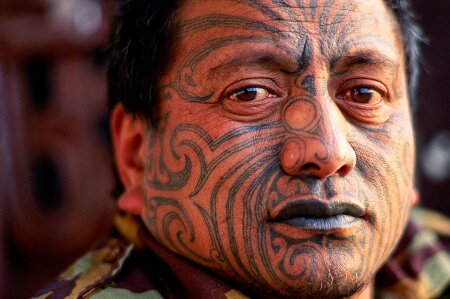
The Maori are the indigenous people of New Zealand. Elaborate tattoos are part of the Maori culture.
As part of the British Empire, New Zealand took part in WWI and WWII – both in the Pacific and the European theaters of war. Furthermore, New Zealand took part in a range of regional conflicts, ranging from the Second Boer War, between 1899 and 1902, to the War on ISIL – Islamic State of Iraq and the Levant – from 2014 until today.
During WWI, New Zealand forces, deployed in the Pacific, occupied the German colony of Samoa in 1914. In 1920, Samoa was awarded to New Zealand as a League of Nations mandated territory, named Western Samoa. Western Samoa became a United Nations trust territory in 1946 and gained independence in 1962 as the kingdom of Samoa. Also in WWI, New Zealand forces – jointly with Australian forces – occupied the island of Nauru, part of the German colony of the Marshall Islands. In 1920, Nauru became a League of Nations mandated territory. Although formally entrusted to Australia, Great Britain and New Zealand, Nauru was de facto administered by Australia. Nauru became a United Nations trust territory of Australia in 1946 and gained independence in 1968.
Economics

The Haka is a traditional Maori dance. The Haka has been adopted by the New Zealand national rugby team – an impressive sight at the start of a rugby match.
Economically, wool production was the mainstay of the economy throughout the 19th century. In the late 19th and early 20th centuries, agriculture was diversified to include meat production and dairy farming. Manufacturing developed on a limited scale, in the late 19th century, mainly to support the agricultural sector. Until the 1970’s, New Zealand was a predominantly agricultural country. Protectionist policies with regard to the exports to Great Britain – New Zealand’s main export market – resulted in one of the highest living standards in the world. As Great Britain joined the European Union in 1973, the privileged position of New Zealand ended and New Zealand faced a depression. Major economic reforms, since then, have changed the New Zealand economy from a protectionist, government controlled economy to a free market economy. In parallel, the economy diversified to include manufacturing and services – services currently being the most important sector. New Zealand ranks 49th in terms of per capita GDP out of 230 countries in the world and it ranks 9th on the United Nations Human Development Index.
Demographics
The majority of the population is of European descent – 71%. While in the 19th century most immigrants came from the British Isles, in the 20th century increasing numbers of immigrants came from other European countries and from the Pacific islands under New Zealand administration. Recent years have shown an increase in the number of immigrants from Asian countries. The indigenous Maori decreased in number significantly in the 19th century, but have since recovered. The Maori currently account for 14% of the population.
Postal history New Zealand
General issues

1936-1942 – The kiwi is the national symbol of New Zealand and the nickname for New Zealanders – here in a design from the classical period…..
The first stamps were issued by New Zealand in 1855. These are of the Chalon Head type, a full view portrait of Queen Victoria after a portrait by Alfred Edward Chalon.[1]For more about the Chalon Heads, please refer to the profile of Nova Scotia. The Chalon Heads were issued, until 1872, in a number of color shades with different perforations and watermarks and on different types of paper – a domain for the specialist. All Chalon Heads are in the mid to very high catalog value ranges. More common side view portraits of the Queen were issued in different frames from 1873. A first large set of pictorials was issued in 1898. Many of the issues in the classical era come in a range of varieties. In the modern era, New Zealand has issued a blend of stamps with themes of national interest and themes aimed at the collectors market.
Special and related issues
Stamps were issued for the occupied territory of Samoa from 1914 – New Zealand stamps overprinted Samoa. These were used until 1920. Subsequently, stamps were issued for the trust and mandated territory of Western Samoa until Samoa gained independence in 1962.
The New Zealand territories in the Pacific Ocean had separate stamp issuing policies as follows:
- The Cook Islands issued stamps between 1901 and 1919 and again from 1932 until today. Between 1919 and 1932 the issues for the Cook Islands were designated Rarotonga.
- For some of the individual Cook Islands stamps were issued as follows:
- Niue issued stamps since 1901 until today.
- For what would become the Ross Dependency, stamps were issued on the occasion of Arctic expeditions in 1908 and 1911. The Ross Dependency, as such, issued stamps since 1957.
- Tokelau issued stamps since 1948.
For a more detailed discussion of these issues, please refer to the profiles of these territories. Stamps of New Zealand were, furthermore, used in Pitcairn Islands between 1927 and 1940.
For an overview of the political and postal history of New Zealand, please refer to the country diagram of New Zealand.
Album pages
← Previous page: New HebridesNext page: Niuafo'ou - Tin Can Island →


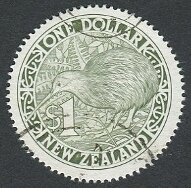
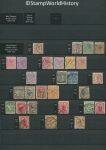
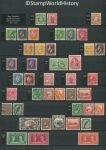
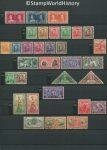

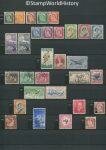
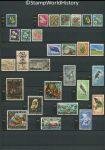

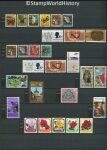


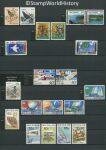
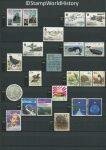
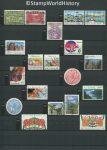

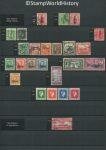


In New Zealand territories section for Tokelau Islands do you want to mention that formal name changed to Tokelau in 1976 as you do in Tokelau profile?
William
Excellent suggestion, thanks.